
Spring is a season of transition. A shift from the cold and gray days of winter to the bright and balmy days of summer. But confusion ensued as as temperatures tumbled across the Tri-State right after spring sprung.
It’s a notoriously topsy-turvy season, but to give us some clarity on what’s ahead NOAA issued its 2024 spring outlook Thursday.
And for those of you who are looking forward to the warmth, this forecast is for you. NOAA is not only predicting a warm season here in the northeast, but throughout most of the country. It’s a trend that shouldn’t surprise anyone. The impacts of climate change are becoming more obvious.

The uncharacteristic warmth expected this year has been a climate signal for decades. Looking back 50 years, spring in Central Park has seen an overall average temperature increase of about 1.3 degrees Fahrenheit, with 4 out of our top 10 warmest springs on record coming within the last 15 years.
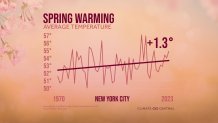
And the phenomenon isn’t unique to our region. Almost the entire United States is experiencing the shift. Only the Northern Plains have gotten cooler.
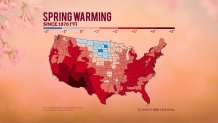
In terms of precipitation, the picture is a little fuzzier. The Northeast has nearly equal chances to see a wetter-than-normal or a drier-than-normal spring. Regions that are historically humid, like the Gulf Coast, Mid-Atlantic, will likely experience more rain than normal. Conversely, the perennially parched areas of West Texas and New Mexico could face an exceptionally dry spring.
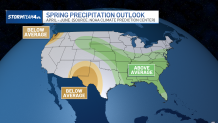
The unusually warm weather expected this year could very well exacerbate precipitation trends. Where above-average rainfall is expected, flooding is a bigger concern because rain events are becoming more intense in the warmer climate. In Northern New Jersey, New York City and the Lower Hudson Valley flooding will be a concern this year. Storm systems are likely going to be rich in moisture and able to produce heavy downpours.
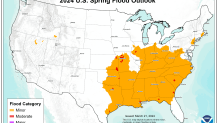
Conversely, areas in a drought could see that drought intensify thanks to higher heat. This year, West Texas and New Mexico are most at risk for this to happen.
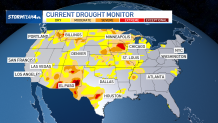
The changing look of spring goes well beyond the thermometer and the rain gauge. Arguably the most talked about consequence is the expansion of the growing season. Over the last 5 decades, the growing season across the tristate has increased by 2-4 weeks. Cherry blossoms are blooming earlier and fall color is coming later. If you suffer from seasonal allergies, your sniffling and sneezing starting earlier in the year and lasting longer.




